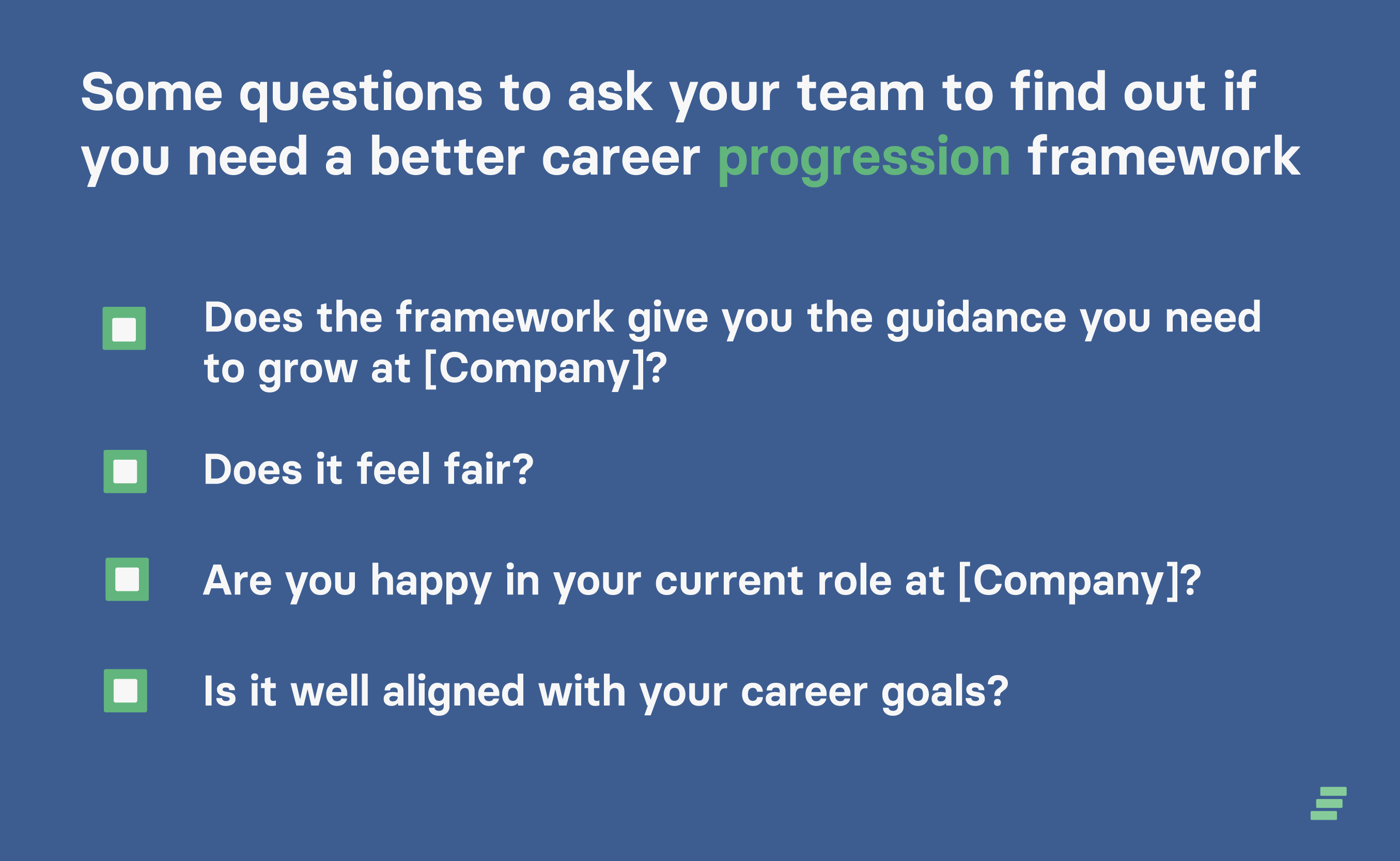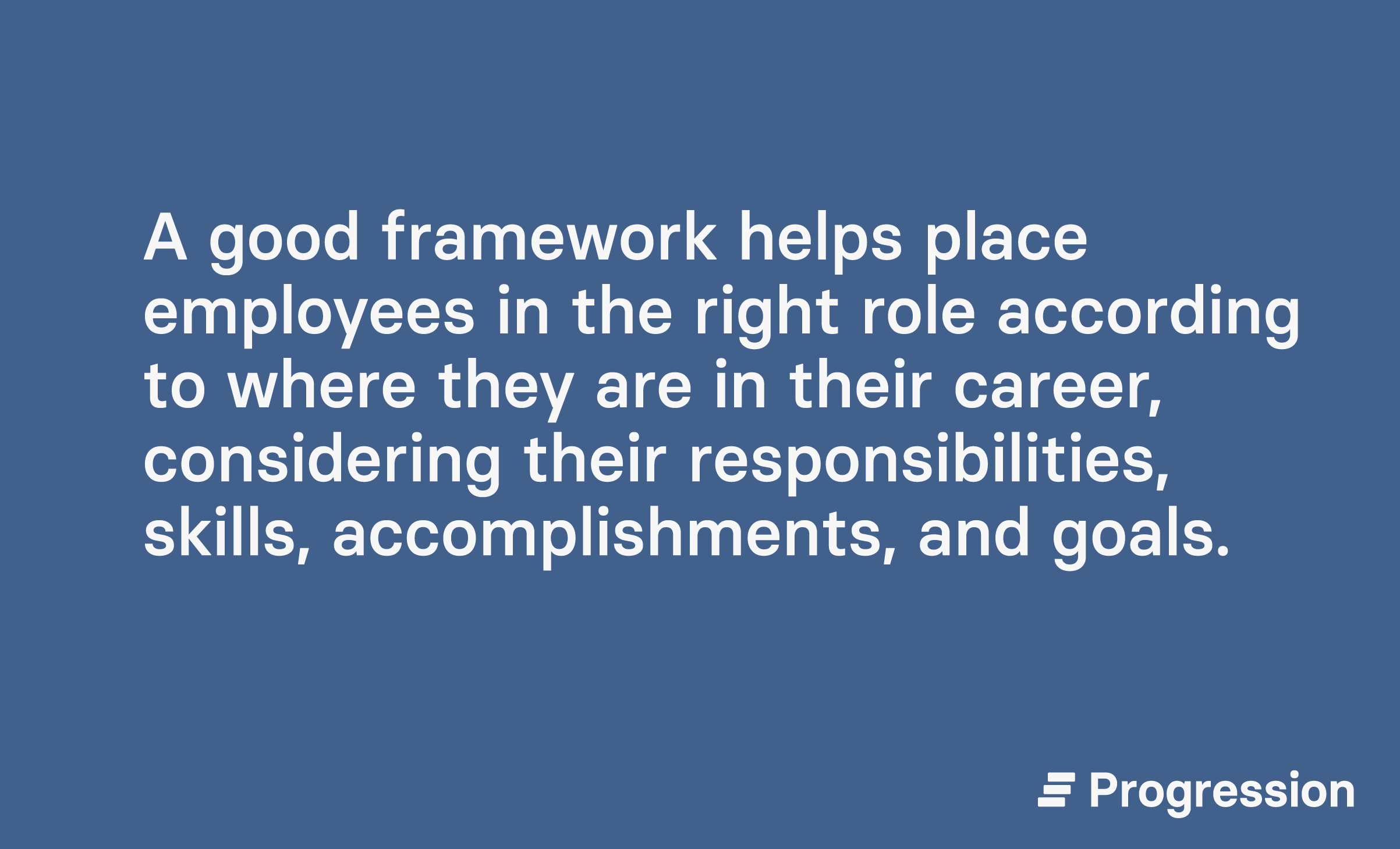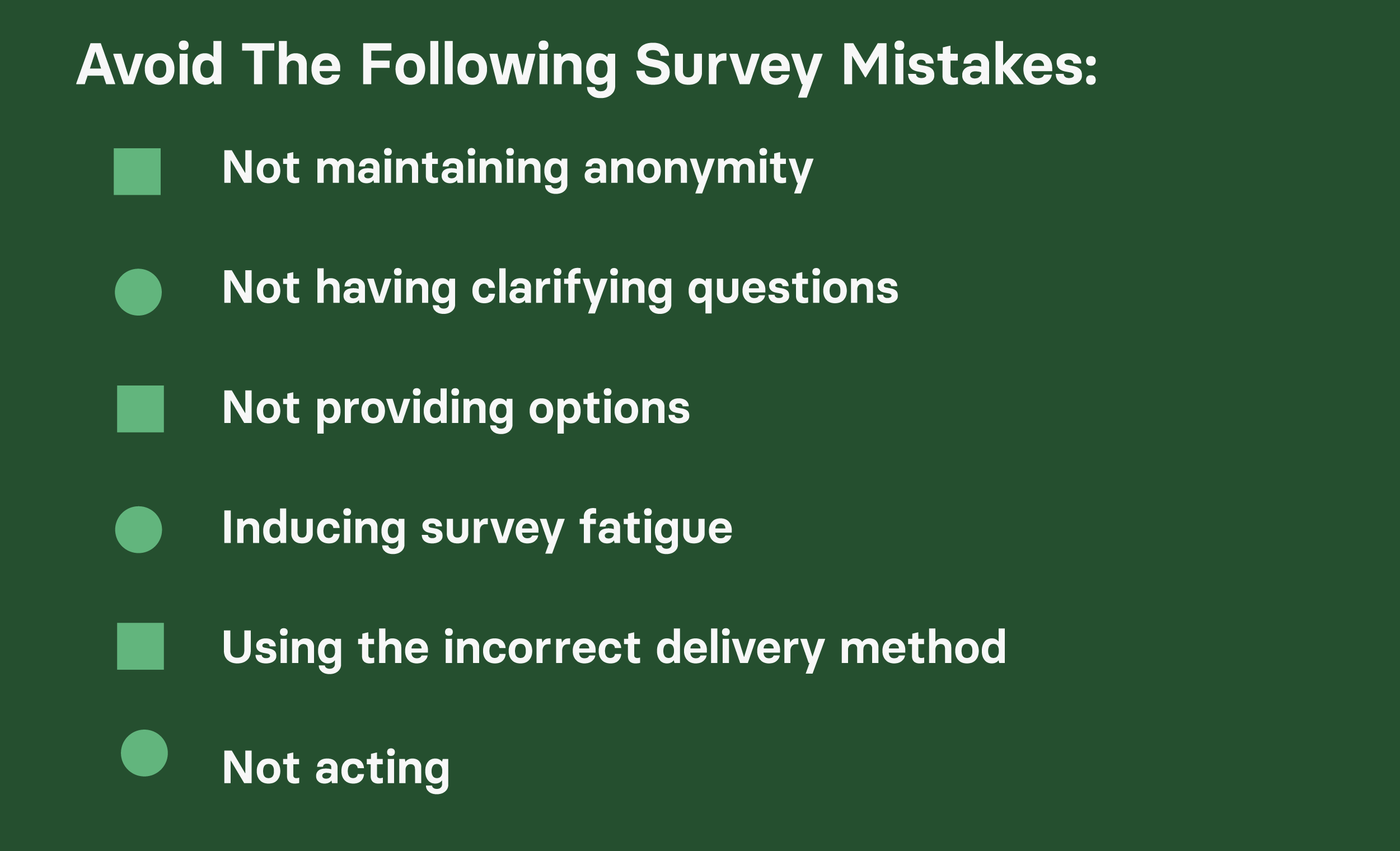You set up your career progression framework. Your team is using it. Everyone seems happy. Time to wipe your hands clean and consider it a job well done for the time being, right?
Wrong.
Sorry to burst your bubble, but using career path frameworks isn't just a one-and-done task. Progression frameworks require consistent building, measuring and sharing for everyone involved to get the most out of them.
And if you’re not gleaning frequent insights from your team members to find out if you need a better progression framework, you’re doing yourself (and more importantly, them) a disservice.
Luckily, we’ve got your back with our seven-question survey that will let you know if you’re on the right track (no pun intended) or need to make some adjustments.
The importance of a career progression framework
Before we dive into the seven-question survey, it’s important you first understand the benefits of career path frameworks:
They help talent find out about different job options available to them
With frameworks in place, team members can browse career tracks and pathways. They can also compare roles–both vertically and cross-functionally–to find out about different job options available to them within your company.
This increases employee engagement and loyalty, which can benefit your company in the long run with reduced hiring costs.
They also help talent know where to focus their development
Imagine an employee aspires to a more senior position or an entirely new role. They’ll have different needs to someone who wants a lateral move to another department.
No matter what an employee's aspirations are, progression frameworks help them know where to focus their development. At a glance, they’ll be able to see their existing skills and competencies and be able to plan from there.
They provide greater visibility into what’s going on in terms of career progression
Traditional employee management approaches (think: annual reviews) are notorious for leaving employees unaware of their career progression opportunities.
They’re often employer-driven. Employees don’t know what’s being measured, and they also don’t have a say in when they’ll be conducted. (Which is all great for employers. Not so hot for employees.)
With a career progression framework, your employees have to participate because driving their own progression is at the centre of the entire process. No ifs, ands or buts.
They allow a solid foundation for collaboration and accountability
Last but not least, career path frameworks are all about setting up a solid foundation between you and your team members to establish trust, collaborate and hold each other accountable.
Again, employee participation is key to progression frameworks. You work hand in hand with them to advance not only their career objectives, but also your business’ goals.
7 questions to a better progression framework

As a team leader, the following are some questions you should ask employees to determine if your current career progression framework is good or needs improvement:
Q1: Does the career progression framework give you the guidance you need to grow at [Company]?
The goal is to have a robust, user-friendly framework that gives team members a clear picture of their career and the requirements for progression.
Some more spin-off questions to this one can include:
- Do I know how to use the progression framework to plan my career growth?
- Do I know what I need to do to progress at [Company]?
- Do I know the career opportunities for me at [Company]?
- Do I know where my career is going?
- Do I know what role I'd like next in [Team]?
Q2: Does the progression framework feel fair?
Employees must see a progression framework as a tool to help them grow in their careers.
It should be completely transparent and fair. There should be no surprises when employees have performance reviews, 1:1s, coaching or mentoring sessions with leaders. And it should be clear what’s expected of them on a regular basis.
Q3: Are you happy in your current role at [Company]?

A good framework helps place employees in the right role according to where they are in their career, taking into consideration their responsibilities, skills, accomplishments, and goals.
Keep in mind that career fulfillment leads to happier employees. (No, we didn’t just come up with that. It’s well known that professional development is associated with job satisfaction when paired with vacation days and good compensation.)
Side note: As a team leader, make sure you express appreciation for your employees in addition to providing feedback.
Q4: Do you know exactly what the company needs you to improve on?
When done right, a progression framework highlights skill gaps and gives both the employee and manager an opportunity to discuss how to fill these gaps to move into a new role. In other words, it gives employees tangible results to work on.
Q5: Is the progression framework at [Company] well aligned with your career goals?
In the same light, a progression framework should be aligned with an employee’s personal development plan. After all, the whole point of having one is so employees get excited about their current role and the opportunities available to them as they advance in their careers.
(Don’t think your workers won’t leave for better career development options. Because they will, and they do.)
Q6: Is the progression framework flexible?
Some progression opportunities may arise immediately. Others arise with time. It’s a process you can’t (nor should) rush. For this reason, ensure the framework is flexible enough to accommodate new roles and opportunities that may not exist yet.
Q7: If you could improve one thing about [Team]'s career progression framework, what would it be?
This question leaves room for feedback, which can be used to revise and improve the framework. It can also give insights into problems employees are having with the framework.
We’ve said it before, and we’ll say it again – improving your team’s progression isn’t about the framework. It’s all about starting a conversation that will allow them to get clarity on their current position and develop a vision for the future.
Top mistakes to avoid when conducting your survey

Conducting a survey incorrectly can be just as detrimental as not conducting one at all. (Womp womp.) To be the most efficient and effective, avoid these top mistakes:
Not maintaining anonymity
Surveys should be anonymous. Nix questions that would identify specific individuals. (This is especially important for those with small teams.)
Not having clarifying questions
Clarifying questions leave little room for interpretation. This allows employees to better navigate the survey no matter their circumstances (for example, if they’ve just joined the company and may not know how to use the framework yet).
Some clarifying questions could include:
- Tenure data. Ask how long members have been working at the company. Opt for multiple choice with broad bands – e.g. under 6 months, 6-12 months, 1-2 years, 3+ years, etc.
- Demographics. This includes gender and ethnicity. Ensure you include an open text option so folks can self-identify – e.g. How do you describe your ethnicity/gender?
- Seniority data. Ask how senior are you in the team? Multiple choice options could be broad – e.g. junior/mid-level, senior/manager.
Not providing options
Likewise, these questions should be optional, or there should be an ‘I'd rather not say' as an option for each.
Inducing survey fatigue
Prevent survey fatigue by using a ‘less is more approach.” All questions should be mutually exclusive and collectively exhaustive (MECE). In other words, make sure you cover everything in the fewest number of questions possible.
(While you’re at it, keep employee attention spans and patience in mind as you’re designing the survey.)
Using the incorrect delivery method
Inducing survey fatigue is one crucial mistake to avoid. Another is delivering them improperly. Keep employees’ normal workflow in mind to maximize acceptance and participation rates.
For example, more senior employees who don’t frequent their desk may prefer mobile-friendly surveys with SMS reminders. On the other hand, other office employees who do sit at the computer most of the day may prefer receiving the survey via email or Slack.
Not acting
Lack of action from management is easily the most prominent problem with surveys. There’s no use in collecting data from employees if answers have no subsequent impact on company policies and procedures.
Ignoring what your team members have to say will make them lose trust in the process and in you as a leader.
It begins and ends with you
Yes, our seven-question survey will help you find out if you need a better career progression framework. But it’s up to you to take action.
With a plan in place and the necessary insights in tow, improve your career path framework so it gives guidance for growth opportunities, improves job satisfaction, aligns with employee career goals and is flexible enough to accommodate new roles and opportunities.
By doing so, you’re taking care of the professional needs of some of the most important stakeholders in your company: your employees. In turn, they’ll take care of you. Simple.
And if all this is pretty new to you, and you have no idea where to get started with your progression framework, don’t worry. We have five tips to help you get going on the journey.






